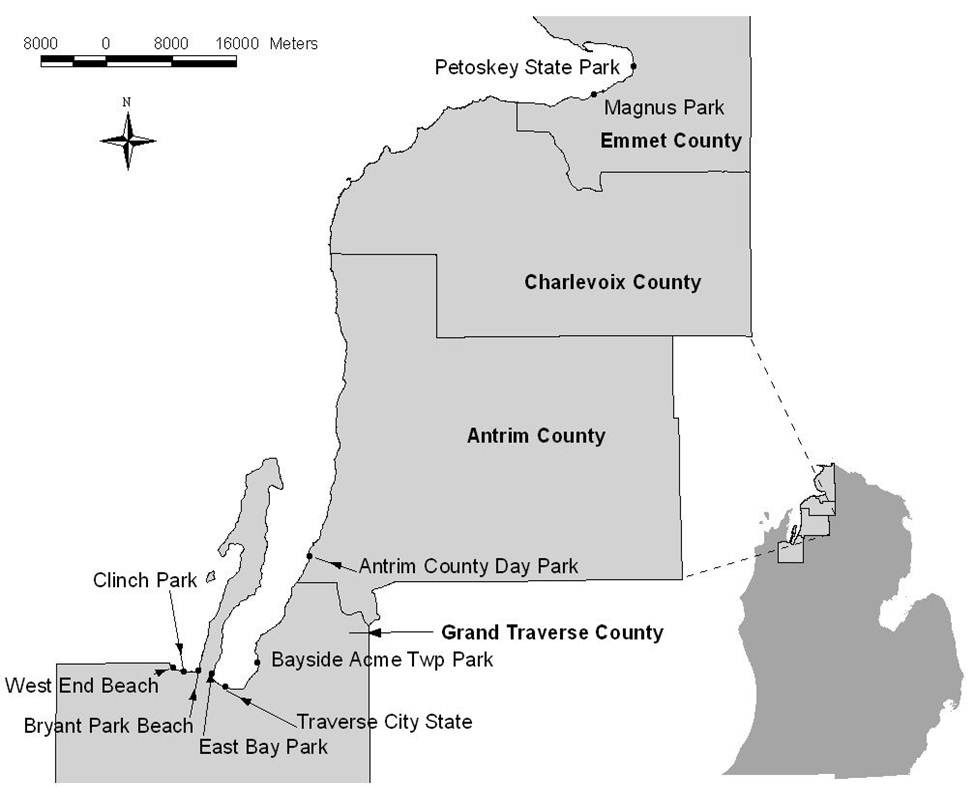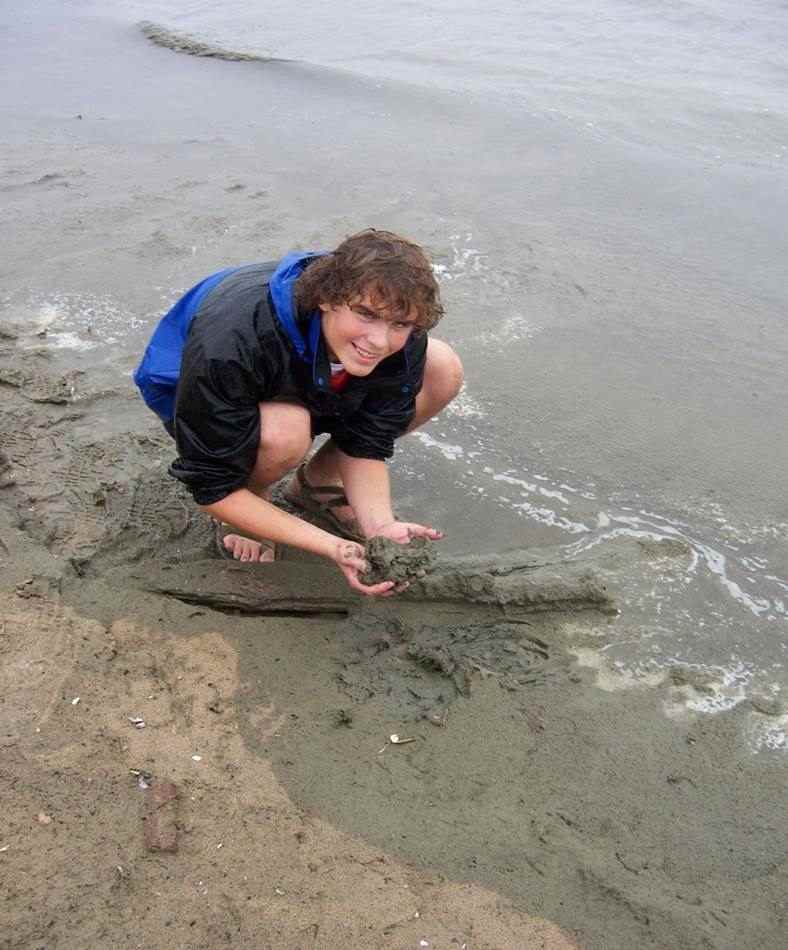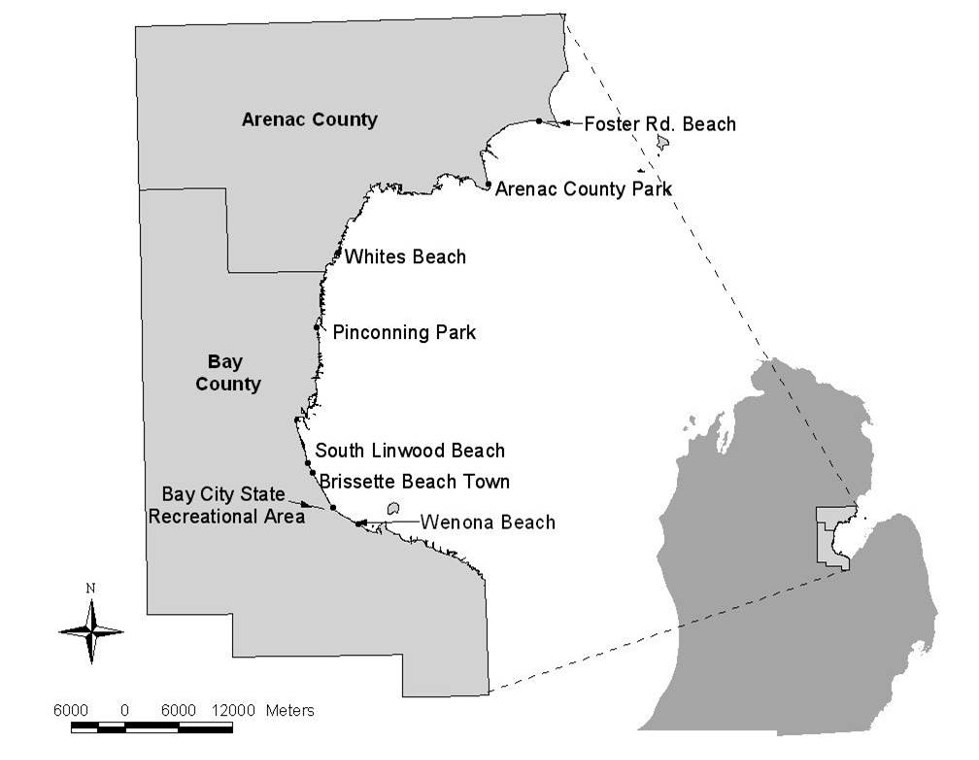Assessment of E. Coli and Microcystins in Cladophora Mats in the Nearshore Waters of Grand Traverse Bay, Little Traverse Bay, and Saginaw Bay.



Products
- Final Report
- Power Point Presentation
- MDNRE Report: Assessment of E. Coli and Microcystins in Cladophora Mats in the Nearshore Waters of Grand Traverse Bay, Little Traverse Bay, and Saginaw Bay. [more]
Project Description
A nuisance in some areas of the Great Lakes, Cladophora is a filamentous green alga that forms thick mats that wash on shore and foul beaches. The proliferation of Cladophora along the shores of the Great Lakes is thought to be a result of invasive zebra and quagga muscles altering the nearshore cycling of nutrients. In order to assess the role of Cladophora mats in sequestering E. coli and the cyanobacteria toxin microcystin in the nearshore waters of Grand Traverse Bay, Little Traverse Bay and Saginaw Bay, the AWRI Environmental Chemistry Laboratory recently started work on a $59,860 grant from the Michigan Department of Environmental Quality (MDEQ). The Environmental Chemistry Laboratory has been involved with the beach monitoring program in Muskegon, Oceana, Mason and Manistee counties since 2001. Recently, our laboratory completed research projects funded by the National Oceanic and Atmospheric Administration and MDEQ that involved cyanobacteria (i.e., blue-green algae) and microcystin production. In June 2008, the Environmental Chemistry Laboratory initiated sample collection from 16 beaches within the Grand Traverse, Little Traverse and Saginaw Bays. These samples will be analyzed for E. coli and microcystins, which both pose human health risks when present in high concentrations. Building on the former studies, this grant allows for the examination of the role of Cladophora mats in the sequestration of E. coli and microcystins in important recreational areas in Michigan. AWRI is collaborating with the Great Lakes Water Studies Institute at Northwestern Michigan College in Traverse City, where a laboratory processes samples and analyzes Cladophora mats for E. coli. The Water Studies Institute also will coordinate outreach activities with support from Watershed Center Grand Traverse Bay and the Tip of the Mitt Watershed Council. In addition, sampling schedules have been coordinated in Saginaw and Grand Traverse Bays with the local health departments to provide nearshore and swimming depth results on the same days. Finally, AWRI will coordinate sampling schedules with Michigan State University and Watershed Center Grand Traverse Bay in order to track the source of E. coli in Saginaw and Grand Traverse Bays.
An assessment of the ability of Cladophora mats to sequester E. coli and microcystin LR and RR was conducted in the nearshore waters of Grand Traverse Bay (7 sites), Little Traverse Bay (2 sites), and Saginaw Bay (8 sites). The sampling locations were at public beach access points where Cladophora mats previously have been observed. The goals of this research were to determine the spatial and temporal variability of E. coli populations in Cladophora mats in these recreational waters and if cyanotoxins (microcystin LR and RR) are sequestered in the detached algae. The collection of Cladophora samples was coordinated with local beach monitoring programs to facilitate the comparison with ambient water bacteria concentrations. This project provided important data for the assessment of public health impacts and the development of beach management programs to address the problems associated with Cladophora accumulations.
